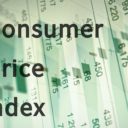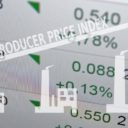

Producer prices reported by the Labor Department. A Ford Factory worker on the assembly line. (Photo: REUTERS)
U.S. producer prices unexpectedly fell in February, indicating inflation pressures may delay an anticipated June interest rate increase from the Federal Reserve. In a report released Friday, the Labor Department said the producer price index for final demand fell 0.5 percent after dropping 0.8 percent in January.
While it was the fourth straight monthly decline in the so-called PPI, the prior 12 months through February have seen producer prices fall by 0.6 percent. It marks the first drop since the series was revamped in 2009, though it was unchanged in January.
The results missed the consensus mark, as economists polled by Reuters had forecast the PPI rising 0.3 percent last month and remaining unchanged from a year ago.
The decline in producer inflation came despite a stabilization in energy prices, which had weighed on price pressures in recent months. The dollar’s strength against the currencies of the main U.S. trading partners is helping to hold down inflation, but the Fed’s target rate is still far off.
Lower-than-expected inflation could prompt the Fed to delay a much-needed raising of interest rates until much later this year. While some cite a tightening labor market, wages and inflation have been far off the needed target to reflect a healthy economy. Particularly regarding the housing market, many are beginning to fear that a slight rise in rates may topple the otherwise abysmal gains made by the sector.
The volatile trade services component, which mostly reflects profit margins, fell by a record 1.5 percent in February after rising 0.5 percent in January. It was weighed down considerably by a severe 13.4 percent drop in profit margins at gasoline service stations.
A key measure of underlying producer price pressures — which excludes food, energy and trade services — was unchanged after a record 0.3 percent drop in January.
All eyes this week will be on the Federal Open Markets Committee (FOMC), as Fed Chair Janet Yellen is looking for a reason to remain dovish. The March 18 FOMC meeting and Yellen press conference to follow is marked on economic calendars across the global market, as is the “dots” forecast, the labor market, the strength of the U.S. dollar, Eurozone sovereign yields, inflation, disinflation or deflation.
“Yet, the big issue – the center ring attraction – will be the potential removal of the word “patient” from Yellen’s guidance strategy,” said Larry Shover, a former derivatives trader turned portfolio fund manager. “Never has a word received so much attention and moved me to thinking about, not only why consensus is so stuck on the word but rather, what she could possibly replace it with.”
The Fed added the obscure word “patient” in December to signal markets and investors that FOMC policymakers were not yet ready to raise interest rates. Unfortunately, the move will make borrowing money more expensive and could upset several sectors of the economy, which have all seen a tepid recovery. However, at the same time, the Fed understands that holding interest rates at zero will inevitably do yet-to-be determined damage.






castenum / March 15, 2015
Major forecasters are pointing towards eur/usd parity by end of this year. However, if the FOMC were to remove the “patience” clause from their forward guidance, parity will be attained this coming week. Thus, my inclination that Janet Yellen will stay dovish till the next FOMC meeting in June. Consequently, the eur/usd will retract to 1.10 and above levels
/